I wrote the first sentences that appear in Wolfish almost ten years ago, during the summer of 2013. I was about to be a senior in college, and I was doing my best to blink away the pending maw of where-to-go, of what-comes-next.
I had left my family in Oregon to attend a college in Maine. It was there that I learned who Joan Didion was, and about how it had taken her living in New York City to turn her gaze back home. “I sat on one of my apartment’s two chairs . . . and wrote myself a California river,” Didion later said about Run River. Her words seemed like a decent writing prompt: to write about the place I had left, a place I was not sure I would ever live again. I remember sitting beneath the peeling wallpaper of my summer sublet, listening to the rumble of the tenant below, a man who, we later learned, was breeding pythons. Oregon, I wrote at the top of a new document. A place, like so many others, where white settlers had killed all the wolves. A place, as I was researching for my Environmental Studies thesis, where wolves were coming back.
“Visit someplace you have ‘roots’ and it is easy to encounter the landscape as a strata of story,” I write in Wolfish. Beneath the crust of one’s lived, sensory experience sits the fossilized lore of family arrival. The thickest part, that bedrock of environmental and social history, underlies everything but is too rarely glimpsed. The best writers on this subject dirty their fingernails as they move between the layers. I am interested in place because I am provoked by the experience of being a body in the current of time. What does it mean to be me, here, now? One node in an ecosystem of not only species but stories, mythologies of belonging and fear and love. My favorite writing about place moves kaleidoscopically between art and science, past and present, humans and non-humans, internal and external lives. The author’s relationship with place is not always the explicit subject of the following books—nor is it in Wolfish—but it’s a thread that runs through the pages. A stitch that sews both self and world into being.
***
Wave, Sonali Deraniyagala
Deraniyagala’s memoir is one of the most haunting books I’ve ever read, about the author’s unfathomable grief of surviving Sri Lanka’s 2004 tsunami while losing her husband, children and parents. I’ve returned again and again to the book for how lyrically Deraniyagala writes emotion into landscape, calling attention to the ways we project ourselves into the natural world, and vice versa. “I spurn its paltry picture-postcardness,” she writes at one point about Sri Lanka, where she was born. “Those beaches and bays are too pretty and tame to stand up to my pain, to hold it, even a little.” How to write about an ocean full of beauty, which has taken so much beauty from you? It is both “our killer” and a place of sunset calm, a sea coated in “crushed crimson glass.”
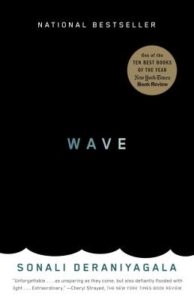
The Second Body, by Daisy Hildyard
In this book-length essay, Hildyard posits that we have two bodies: one contained by skin, the other the sprawl of one’s biological life as it overlaps with other species. “Your body is not inviolable,” she writes. “Your body is infecting the world—you leak.” She strives to understand this ‘second body’ by probing how humans define and interact with animal life, interviewing both a Yorkshire butcher and a criminologist who speaks to silver foxes kept as pets. This book put language to feelings I’d sensed but never been able to articulate, redefining the ways I think about intersections of human and non-human lives.
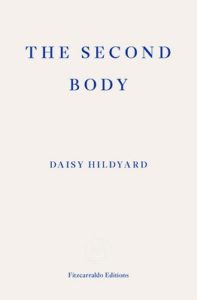
Small Bodies of Water, by Nina Mingya Powles
Powles’ mother was born in Borneo, where the author learned to swim, but Powles herself was born in New Zealand, and grew up partially in China, then moved to London. Moving between modes of memoir, art criticism, and nature writing, Small Bodies of Water is like swimming through a dream populated with the crystalline detail of both “the Atlas moth with white eyes on its wings” and a viral Twitter clip of “flame being whipped into spirals by the wind.” She writes beautifully about migration and belonging and girlhood, and as a writer, I felt particularly attuned to how carefully she pins her world to the page: “Our language for colours shifts according to our own experiences and memories: the blue of a giant Borneo butterfly’s wings pinned in a glass case; the yellow at the centre of a custard tart.”
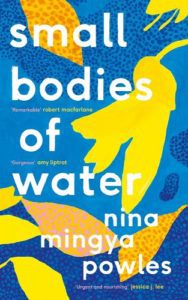
Cold Pastoral, by Rebecca Dunham
Weaving elegy, lyric, documentary, and investigation, this poetry collection holds at its center the Deepwater Horizon oil spill, confronting the question of how to witness a world that is both natural and unnatural, simultaneously mangled and tended by our touch. After the explosion, workers jump off the rig into a “sea stirred to wildfire,” while miles away, in her own yard, “lilies / startle [the] garden pink / and gold.”
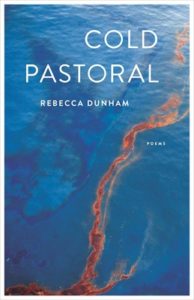
Bright Unbearable Reality, by Anna Badkhen
I bought this book on the perfection of its cover alone, then swiftly fell for the roaming logic of Badkhen’s essays, which unspool themes of communion and human migration, often while the author herself is on the road, in Ethiopia or Oklahoma or Chihuahua City. “The travel I witness often happens under duress,” she writes. “I have spent my life documenting the world’s iniquities, and my own panopticon of brokenness comprises genocide and mass starvation, loved ones I have lost to war, friends’ children who died of preventable diseases.” So much heartache in these pages, but I was persistently buoyed by the tenderness she brings to the world and its inhabitants. Even a pronghorn on the horizon, Badkhen tells us, is related to a giraffe.
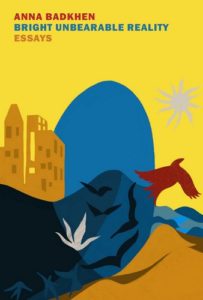
In the Heart of the Heart of Another Country, by Etel Adnan
Made up of lyrical vignettes, this genre-crossing memoir is testament to Adnan’s transcultural and nomadic self, as the text moves between Lebanon, France, Greece, Syria, and the U.S. Her translingual research and progressive activism underlie her observations about self and world. “I reside in cafes: they are my real homes,” she writes. “In Beirut my favorite one has been destroyed. In Paris, Café de Flore is regularly invaded by tourists.” I’m perhaps most compelled by how she writes about rootlessness: “feeling at ease, or rather identifying with drafts of air, dispersing dry leaves and balloons, taking taxis just because they were staring at me.”
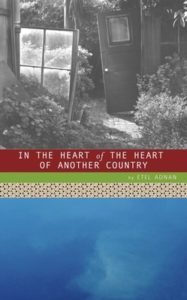
Groundglass: An Essay, by Kathryn Savage
Full disclosure: because I overlapped with Savage in my MFA program, I’ve been admiring this hybrid project and her lyrical research process for years, but this book would have jumped off the shelf at me regardless. “Could there be something humbling and revolutionary in understanding myself as a site of contamination?” writes Savage. It’s a book about illness and grief and motherhood and U.S. Superfund sites (they appear like “confetti flecks” on the map), but also, implicitly, about the act of trying to understand pollution while, “Upstairs, Henry laughs, playing video games.” The book made me think not only of the porousness between earth and self, but between elegy and ode.
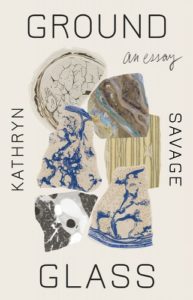
White Magic, by Elissa Washuta
“When I felt myself shredded, I used to wade into Lake Washington…The land put me back together,” writes Washuta, a member of the Cowlitz Indian Tribe indigenous to the region. She now lives in Ohio, where “the land and I talk like strangers,” and tensions around place animate this hypnotic memoir. “I love living in Ohio, I love my forever house, but my missing of Seattle feels almost violent inside of me sometimes, and that is probably the real heartbreak the book is about,” Washuta said in an interview. Moving from the colonial history of Columbia River land treaties to Twin Peaks and the Oregon Trail II video game, Washuta makes visible that which is too often unseen: the modes by which place is created, inherited, metabolized.
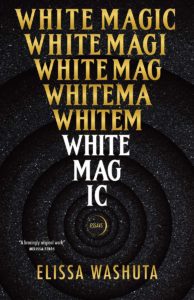
River, by Esther Kinsky
Translated from German by Iain Galbraith, Kinsky’s novel constellates the life of a woman who, for unknown reasons, moves outside London near the River Lea (“small…populated by swans”), reminiscing about other rivers from her past while she goes for long solitary walks. The novel moves essayistically, which is to say, like a river, “constantly brushing with the city and with the tales told along its banks,” ebbing with ecological observation and memory.
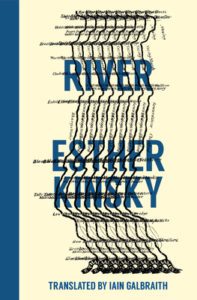
Borealis, by Aisha Sabatini Sloan
An expansive collage encompassing soundtracks, flashbacks to past lovers, conceptual art, and snippets from nature documentaries and overheard dialogues, Borealis is a constellation of observations about queer relationships, blackness, and Sabatini Sloan’s life in a small Alaskan town. The animating pulse of the book could be the quote Sabatini Sloan includes by Renee Gladman: “You had to think about where you were in a defined space and what your purpose was for being there.”
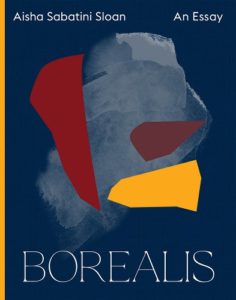
Of course, you’ll also want to scoop up a copy of Erica Berry’s Wolfish—preorders are like gifts to your future self <3
— The Eds.
“This is one of those stories that begins with a female body. Hers was crumpled, roadside, in the ash-colored slush between asphalt and snowbank.”
So begins Erica Berry’s kaleidoscopic exploration of wolves, both real and symbolic. At the center of this lyrical inquiry is the legendary OR-7, who roams away from his familial pack in northeastern Oregon. While charting OR-7’s record-breaking journey out of the Wallowa Mountains, Erica simultaneously details her own coming-of-age as she moves away from home and wrestles with inherited beliefs about fear, danger, femininity, and the body.
As Erica chronicles her own migration—from crying wolf as a child on her grandfather’s sheep farm to accidentally eating mandrake in Sicily—she searches for new expressions for how to be a brave woman, human, and animal in our warming world. What do stories so long told about wolves tell us about our relationship to fear? How can our society peel back the layers of what scares us? By strategically unspooling the strands of our cultural constructions of predator and prey, and what it means to navigate a world in which we can be both, Erica bridges the gap between human fear and grief through the lens of a wrongfully misunderstood species.
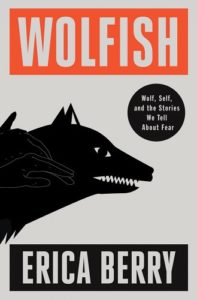
***

Plastic particles are in our bodies, ecosystems, and global waterways. They are passed on through breast milk and the human placenta – known as plasticenta. Plastic is as common as oxygen and water and as toxic as white supremacy, COVID-19, and QAnon conspiracy theories. — Read the rest